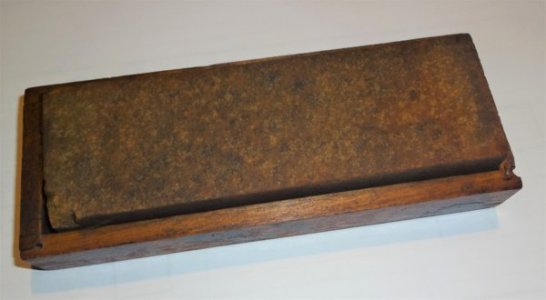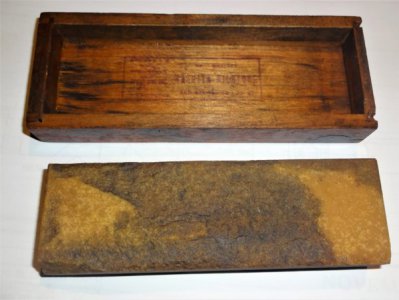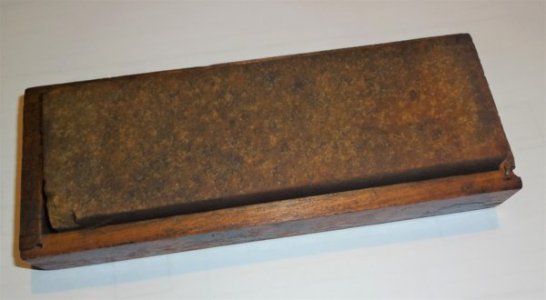- Joined
- Oct 15, 2013
- Messages
- 298
I was in the flea markets today and found a nice little Washita oilstone still in its wooden tray. It still looks pretty nice except for one chipped corner, very little wear on it. I was surprised when I turned it over the bottom side is original rough stone surface, unfinished. I'm wondering if there is a way to get back its original tan/honey color? Is it kosher to rub an oilstone against another larger sharpening stone to scrub the surface? to 'true' it up?
Thanks!



Thanks!




